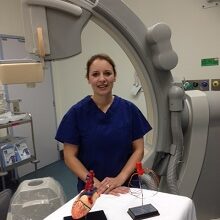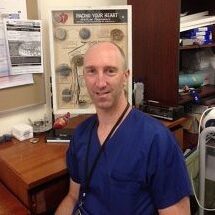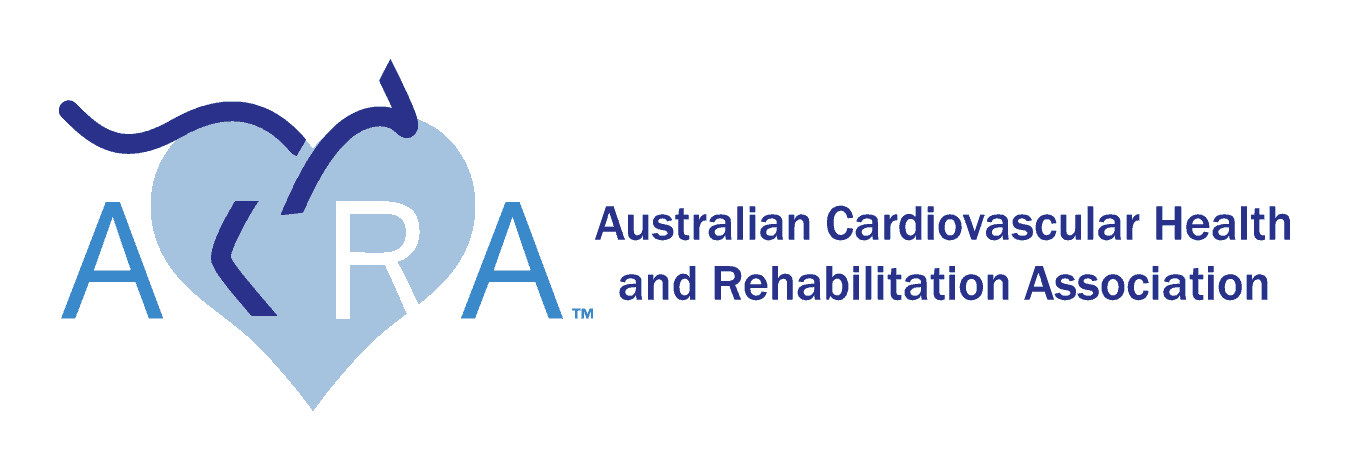Cardiologists' Statements for Cardiac Rehabilitation Advocacy

Dr Paul MacIntyre, Director of Cardiology, Royal Hobart Hospital
Cardiac rehabilitation is a recognised model of care that delivers a series of evidence based interventions designed to modify risk factors for cardiovascular disease through health behaviour change and secondary prevention. All patients with a step change in their cardiac status should be offered menu based cardiac rehabilitation tailored to individual need. Patients with chronic stable disease should be sign posted to community based opportunities that support health behaviour change.

Dr Geoff Abbott, Rehabilitation Consultant, St John of God Frankston Rehabilitation Hospital
Cardiac Rehabilitation has grown greatly in the last three decades from my first contact with the discipline, from being a therapy given to a few selected patients after cardiac surgery or infarction, to something that has wide ramifications in the modern treatment of patients after varying cardiac aetiologies. It has been shown to be cost-effective, saves lives and adds confidence to patients returning home after cardiac events.
The group setting is perfect for instilling confidence, conveying cardiac education and long term secondary risk factor modification, to patients and their families, and is the best way to encourage lifelong exercise, weight reduction and dietary modifications. Each patient however follows an individualised treatment plan relevant to their needs and wishes. It allows patients and their families to discuss fears of return to normal activities with others who have been in similar circumstances and triumphed, in a safe and supportive environment.
Depression following a cardiac event, has been shown to be quite common and cardiac rehabilitation can be effective in reducing symptoms and instilling hope for the future.
An early referral enables patients to gain confidence in the transition between the Cardiac ward and the return to normal everyday existence and reduces the tendency of some to adopt the disabled role due to insecurity as exercise and activities are carefully monitored by experienced carers.
I feel that Cardiac Rehabilitation should be offered to a large proportion of patients following cardiac events such as surgery, infarction and heart failure as it complements the medical and nursing treatment standards.

Dr Michelle Ammerer, Cardiologist Western Cardiology, Western Australia
Cardiac Rehabilitation encompasses a multidisciplinary approach that focuses on patient education, individually tailored exercise training, modification of the risk factors and the overall well-being of the cardiac patients. It has been proven to be effective for people with heart disease.

Dr Bruce Shirazi, Rehabilitation Specialist, Frankston and Parkdale, Victoria
Cardiac rehabilitation gets you better, faster and to a higher level than being left to manage on your own.

Dr Chris Finn, Cardiologist, Sir Charles Gairdner Hospital, Western Australia
Participation in cardiac rehabilitation serves as the first critical step for preventing future heart attacks. As such, it acts as critical gateway for establishing lifelong habits for the ongoing management of heart disease. Research shows that cardiac rehabilitation leads to improved clinical and behavioral outcomes, reduces hospital readmission, strengthens adherence to medication and enhances overall quality of life.

Dr Stuart Cox, Interventional Cardiologist, Sunshine Coast University Hospital
Cardiac rehabilitation is an essential component of any cardiology department. Not only does cardiac rehabilitation provide valuable education and support in the early stages of an acute cardiac illness, it also provides a mechanism for monitoring and following-up patients to ensure compliance with treatments, assist with early return to activity and the work-force, assess for early complications, and screen for the psychological impacts that a cardiac diagnosis can have. The evidence is irrefutable for the benefits a robust cardiac rehabilitation service can have for reducing hospital re-presentations and improving long-term cardiac outcomes in a safe, cost-effective way.

Dr Christine Burdeniuk, Cardiologist Flinders Cardiac Clinic, South Australia
Cardiac rehabilitation can reduce hospital readmissions and death within the first year after a coronary event, saving both lives and money. Programs have routinely demonstrated not only improved clinical outcomes, but also improved behavioural outcomes with regard to exercise tolerance, smoking cessation and adherence to medication. Patients who participate in cardiac rehab programs report enhanced mental health and quality of life. The support networks formed during cardiac rehabilitation often continue after conclusion of the official program.
Unfortunately, cardiac rehabilitation programs are only effective if people attend and despite these documented benefits, only 30% of patients are referred to cardiac rehabilitation.
I believe cardiac rehabilitation should be offered to not only patients who have had a cardiac event, but also those at high risk of a cardiac event, as prevention is even better than cure. Patients in both the public and private systems and most importantly not only in urban, but in rural settings should all be offered the opportunity to engage. Over recent years, much progress has been made with programs being extended from face to face group sessions to web-based services and phone-based support for remote patients.
As clinicians we need to be proactive in encouraging patients to engage in cardiac rehabilitation as the benefits are not in any doubt.

Dr Patrick Oakley, General Physician, Clinical Pharmacologist and Toxicologist and Senior Staff Specialist in Aboriginal Chronic Care, Newcastle, NSW
I’m writing in my capacity as a Specialist physician working in Aboriginal and Rural health, to advocate the utility of Cardiac Rehabilitation as a treatment modality.
Application of many treatment modalities, such as pharmacotherapy and interventional cardiology, appear to have a reasonable uptake- even in rural areas where many resources are scarce. Cardiac rehabilitation is much less often utilised, which is a shame.
Numerous studies and meta-analyses have documented significant benefits for cardiac rehabilitation. Patients with cardiac failure achieve significantly improved quality of life and functional status following rehabilitation, and appear to result in reduced mortality from cardiac disease.
Improved survival, reduced recurrence of myocardial infarction, and a reduction in subsequent hospitalisations have been demonstrated in patients who have completed cardiac rehab following admission with acute ischemic events. Similar results have been achieved in patients with stable ischemic heart disease.
Unlike pharmacotherapies, rehabilitation does not interact with other medications, or cause drug related side effects. Plausibly exercise programmes can be expected to improve many of the comorbidities suffered by patients with cardiac illness, such as diabetes, COPD and smoking.

Dr Johanne Neill, Cardiologist, Ipswich Hospital, Queensland
Having a heart attack is of course a stressful event for all patients. Lifestyle modification, education and exercise are well known to improve quality of life and morbidity and mortality outcomes in addition to medical therapy. The period of hospitalisation is busy, and many patients are shocked and find it difficult to come to terms with their diagnosis, let alone the desirable lifestyle changes that will improve their long-term outcome. Cardiac rehabilitation is an excellent and evidence based means of supporting patients through this stressful time with education and reassurance, and helping them to gain confidence with their “new normal”. The fact that many of our patients do not want to be discharged from the Cardiac Rehabilitation program once their goals are achieved, is tantamount to the importance of the program in making a difference to peoples’ lives.
Dr Jennifer Yu, Staff Specialist Cardiologist, Prince of Wales Hospital, Randwick, NSW
The benefits of cardiac rehabilitation among patients with heart disease are well established and include improvements in longevity, quality of life and exercise capacity, as well as reduction of symptoms and cardiovascular risk factors. Unfortunately, cardiac rehabilitation remains underused, oftentimes because patients are not referred or because there are barriers to patients accessing the programme. I would advocate system changes and further research to help increase patient participation in this important, efficacious and cost-effective intervention.
Dr Simon Grant, Endocrinologist and Physician (General), Bowral & District Hospital, NSW
Cardiac rehabilitation encompasses a multidisciplinary approach that focuses on patient education, individually tailored exercise training, modification of the risk factors and the overall well-being of the patient. It has proven to be effective for people with heart disease.
The benefits of cardiac rehabilitation are well known. Research shows that cardiac rehabilitation leads to improved clinical and behavioural outcomes, reduces hospital readmissions, strengthens adherence to medication and enhances quality of life. But cardiac rehabilitation services are only effective if they are accessible and suitable to people's needs and people participate in them.
